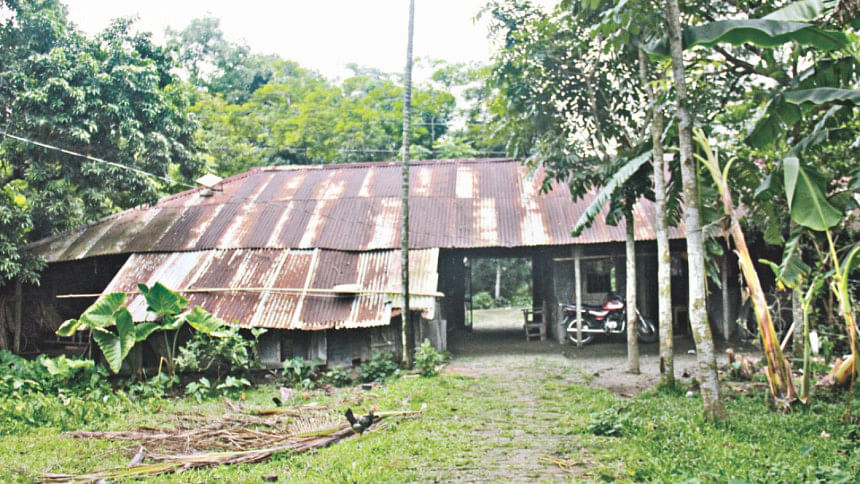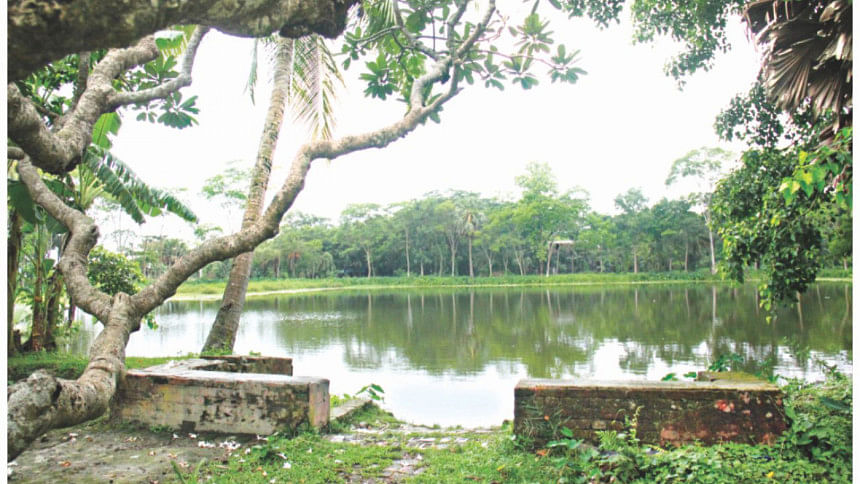Historic Gandhi Ashram in need of care

There are twelve acres, but the site isn't much to look at. Mostly overgrown and uncared for, a few paddy fields and random ponds are leased out to local farmers. There's a fifty-foot long tin shed, a half-finished single-storey building and a primary school. The place in Bebaj village of Kalashkati union in Barisal's Bakerganj upazila might not be well-developed anymore, but it has quite a history. It's said to be the country's oldest Gandhi Ashram.
Established in 1946, the ashram named in honour of Mahatma Gandhi has been the responsibility of a ten-member trust committee since 2014. One of the trustees, Md Alauddin Howlader, 78, is an eyewitness to the institution's founding.
“Satindra Nath Sen was one of Gandhi's followers,” Howlader recalls. “He was also a revolutionary leader in Barisal and Patuakhali against the British. He hoped to build an ashram for people's welfare. With this in mind and together with several associates, he purchased the land in Bebaj. It was called the Gandhi Seba Ashram at first, and after its inauguration, Gandhi's grandson Kanu Gandhi and his wife Ava Gandhi visited.”
“The ashram was still only a small community in 1955 when Satindra died in a Dhaka jail. With our leaders, the followers of Gandhi sang 'Raghupati Raghob Raja Ram,'” Howlader recalls, referring to the bhajan song popular with Gandhi, which he and his followers famously sang as they completed the iconic 241-mile salt march to Dandi in 1930. “After that the ashram was renamed as the Santindra Memorial Gandhi Ashram,” he adds.
“During the Liberation War the Pakistani Army attacked the ashram,” says another trustee, local freedom fighter Nironjan Mistri, “They damaged some of its structures. Some villagers were killed nearby.”
After liberation, the ashram's then-secretary Ram Chattapadhya founded the Kalaskathi Girls' High School on the site and the ashram also built the Bebaj to Kalashkati Road. In 1963 a primary school was added, which has become the Bebaj Amrita Memorial Government Primary School today. Its namesake Amrita was one of the people killed by the Pakistani Army near the ashram during the war.
The ashram sent one of its workers, Ranjan Dutta, to Noakhali's Gandhi Ashram to be trained in beekeeping, duck farming and how to spin thread on a spinning wheel or charkha, such as Gandhi himself famously did. These activities he brought back to Bebaj where they were practised until the 1980s. “It was only when the ashram secretary Ram Chattapadhya died in 1990,” says another trustee Ranjit Dutta, “that most activities ceased.”

The current trustees hope the historical ashram can be revived, a goal that is not without local support. “The ashram represents a dedication to public welfare,” says its current secretary Tapankar Chakrabarty. “We hope that such a historic institution can be developed again to contribute in the future to the welfare of the people in this area. We invite any who can to assist us to make our dream come true.”
“We should move ahead in developing the ashram named for Mahatma Gandhi,” agrees a local freedom fighter, Akkas Hossain.
“I have heard of the Gandhi Ashram in Bebaj,” says the current upazila nirbahi officer in Bakerganj, Md Joynal Abedin. “We have already sanctioned some money to build a one-storied building there. But to realise its potential, the ashram needs a lot more development too.”

 For all latest news, follow The Daily Star's Google News channel.
For all latest news, follow The Daily Star's Google News channel. 



Comments